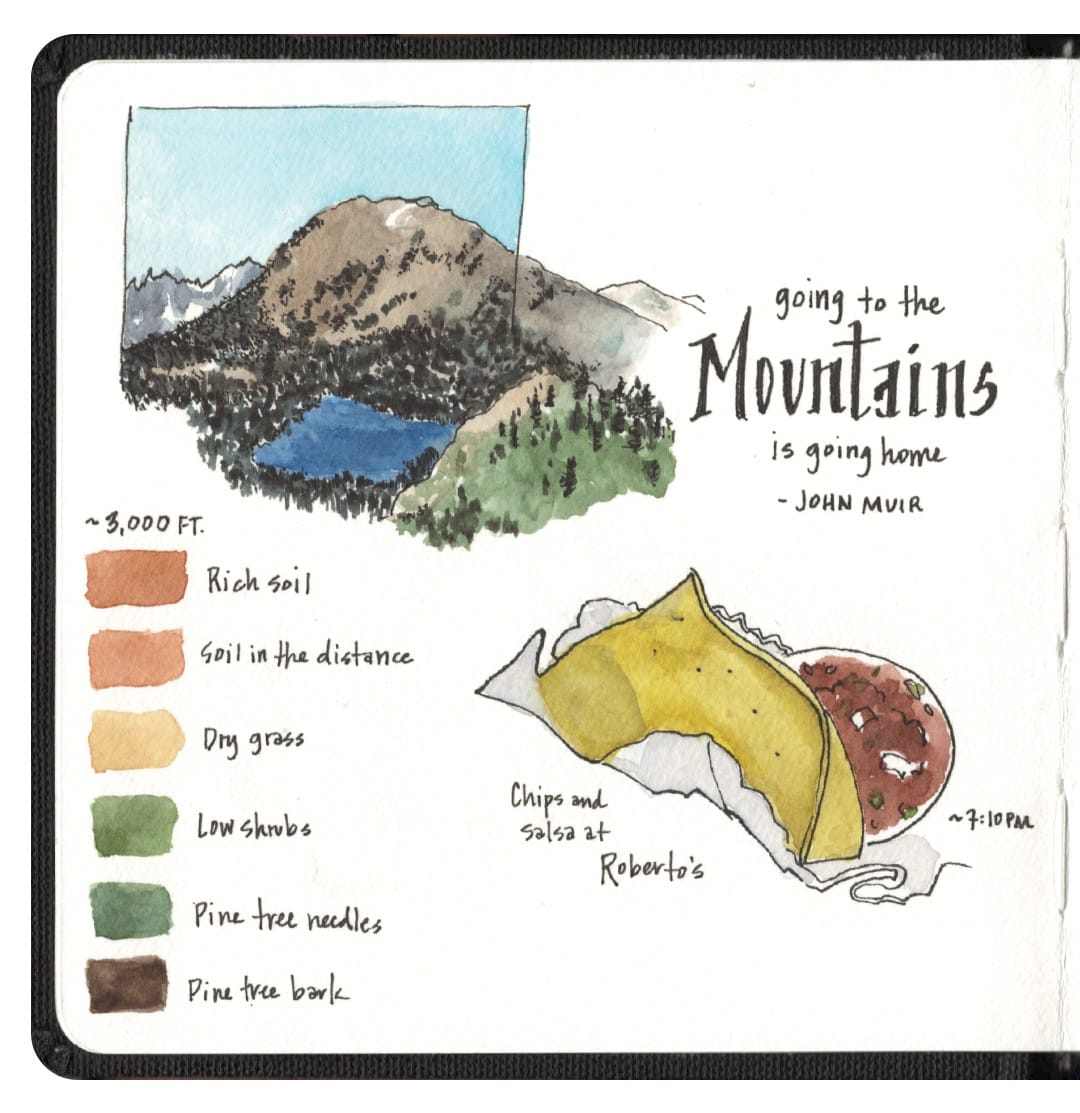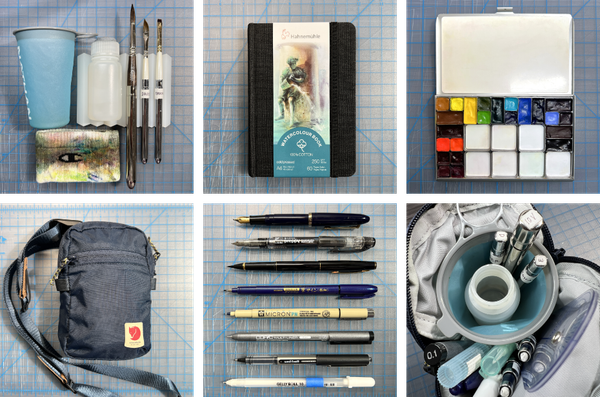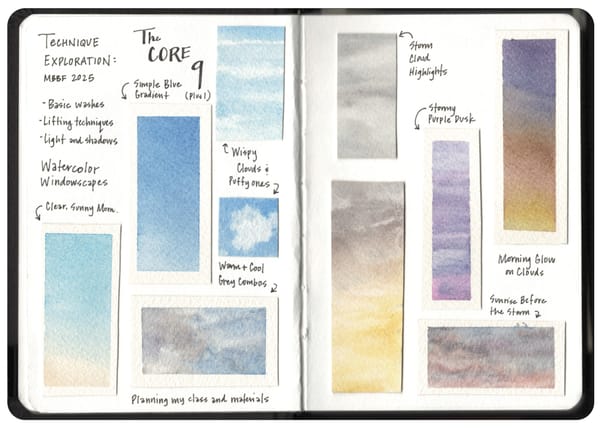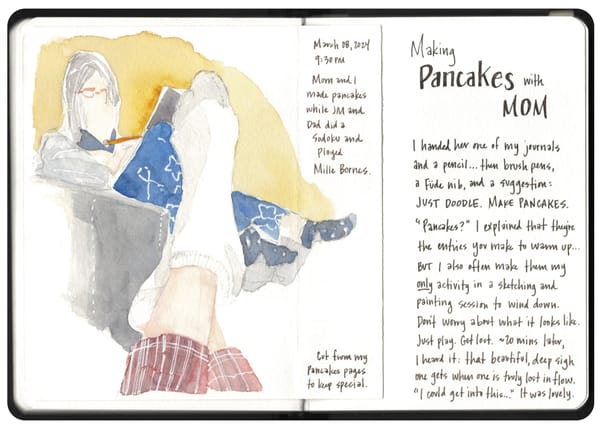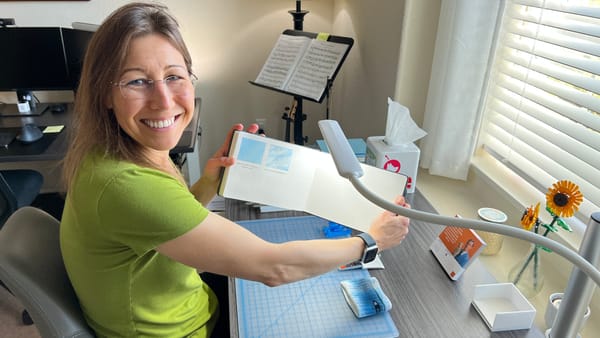The beauty of the unfinished page
How incompletion can free your creativity and deepen your mindfulness practice.
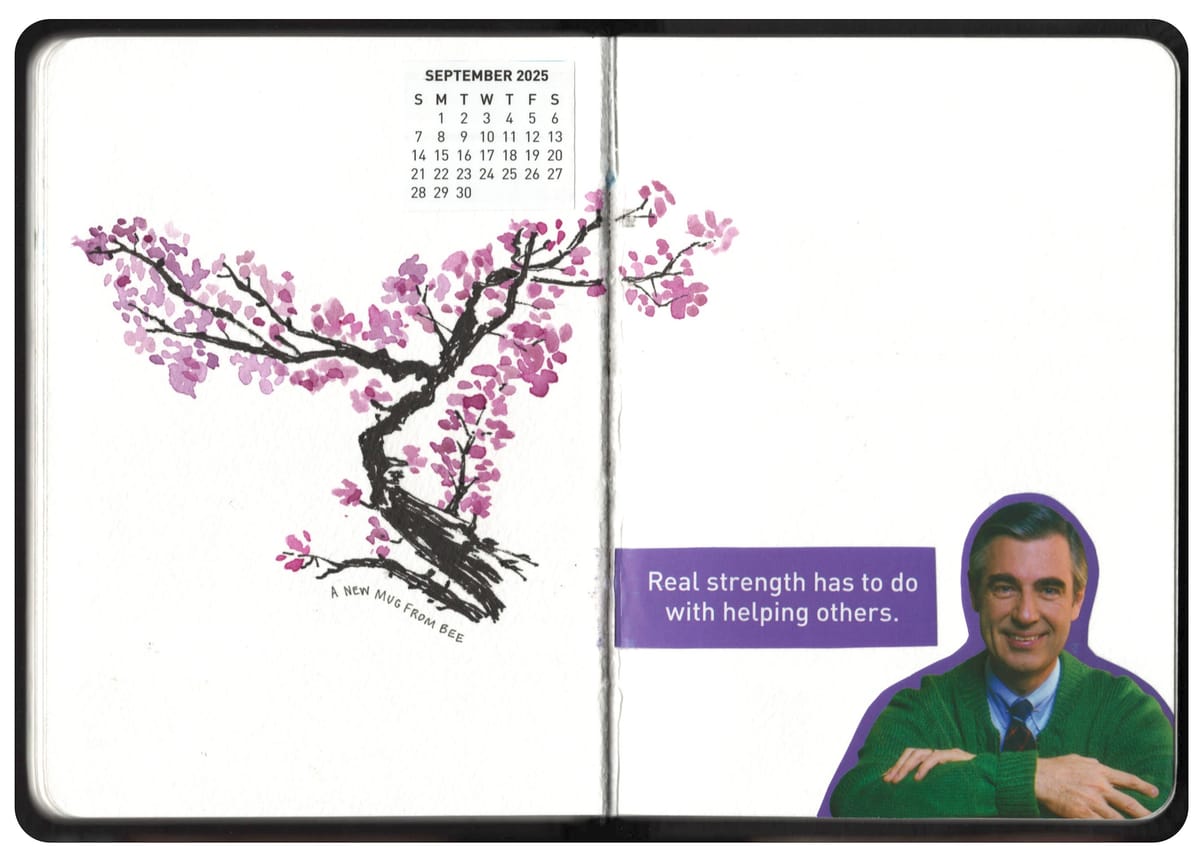
We often think of completion as the measure of success. A sketchbook with blank pages feels “wasted.” A journal with scattered entries feels “abandoned.” We might feel compelled to fill every square inch. Yet, when I look back through my own journals and sketchbooks, I’m struck by something unexpected: the unfinished pages often hold the most meaning.
A journal page from my Morning Pages or a sketchbook page half-formed tells a story all its own. Granted, I have, on occasion, gone back to add notes, but lately, I find myself more resistant to adding to the page once a moment has passed because it’s the white space from these moments that reminds me of what came next.
Life—like us—is in a constant state of flux and rarely ties itself neatly with a bow. An unfinished page is honest. It reflects a moment in time exactly as it was. A drawing abandoned halfway might reveal the moment a neighbor walked up to chat while I was sketching along the path or how the blaze of the hot summer sun forced me to pack up my paints early. A journal entry that ends mid-thought might capture a moment of distraction, joy, or urgency that carried me elsewhere.
Instead of seeing these pages as failures, I’ve come to see them as snapshots of raw life. Evidence that creativity reaches far beyond tidy, uninterrupted sessions.
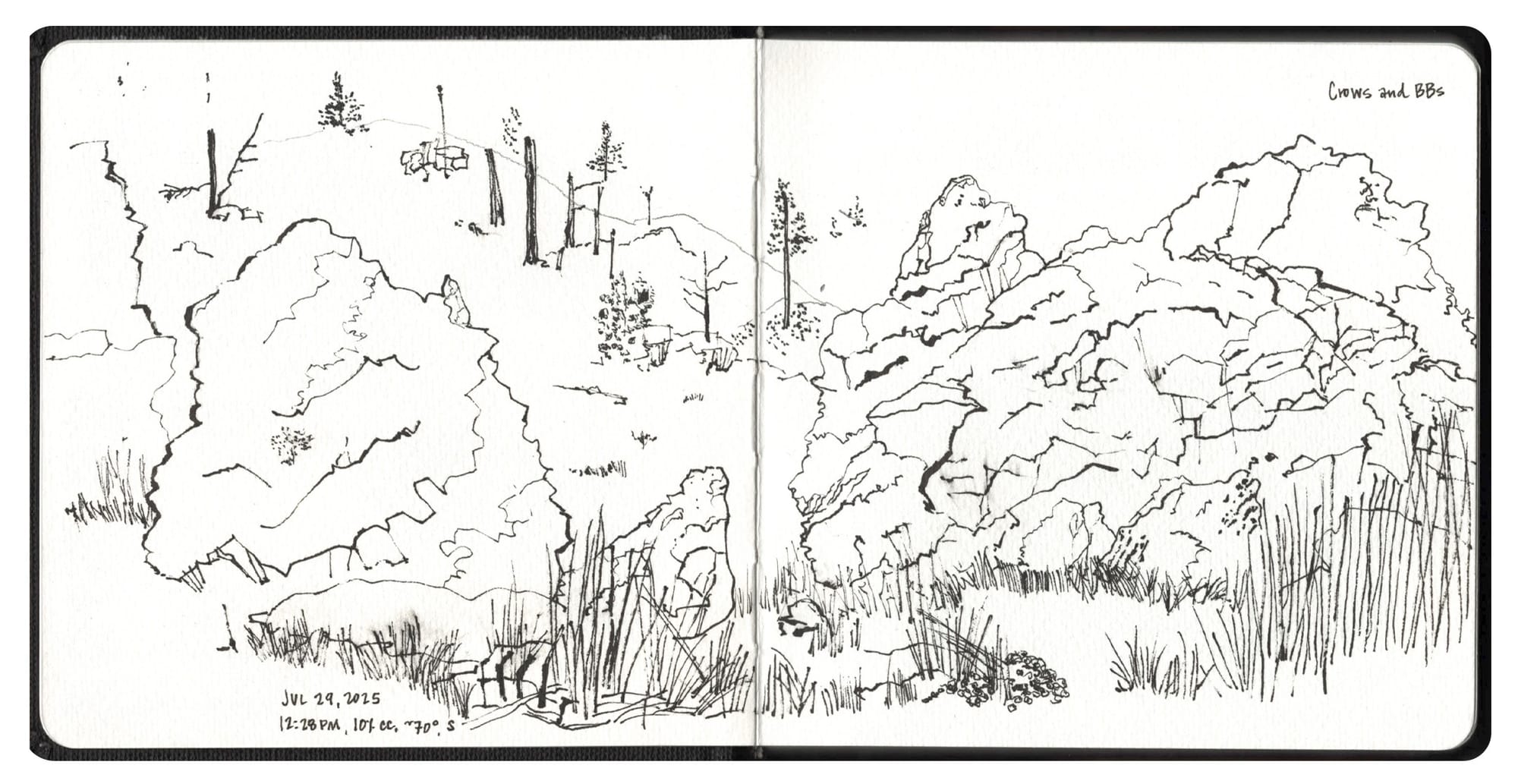
Letting go of perfectionism
When we demand that every page be “complete,” we put pressure on ourselves that can stifle creativity. Perfectionism might make us believe that the unfinished sketch is an unworthy sketch, but creativity doesn’t thrive under pressure—it thrives in freedom.
Allowing ourselves to leave pages unfinished helps us break away from the trap of perfectionism and creates space for experimentation. No one page lives in isolation. Instead, it’s the sum total of all our pages from all our journals and sketchbooks that tells a story across time. One half-finished sketch of a tree may connect to a later page where the tree is complete. One scattered entry may echo themes that resurface in more detailed reflections months—or even years—later.
Unfinished pages become the branches of our tree of creative expression. They remind us that mastery isn’t built in any single, finished sketch but from the ongoing practice of showing up and putting in the pencil miles.
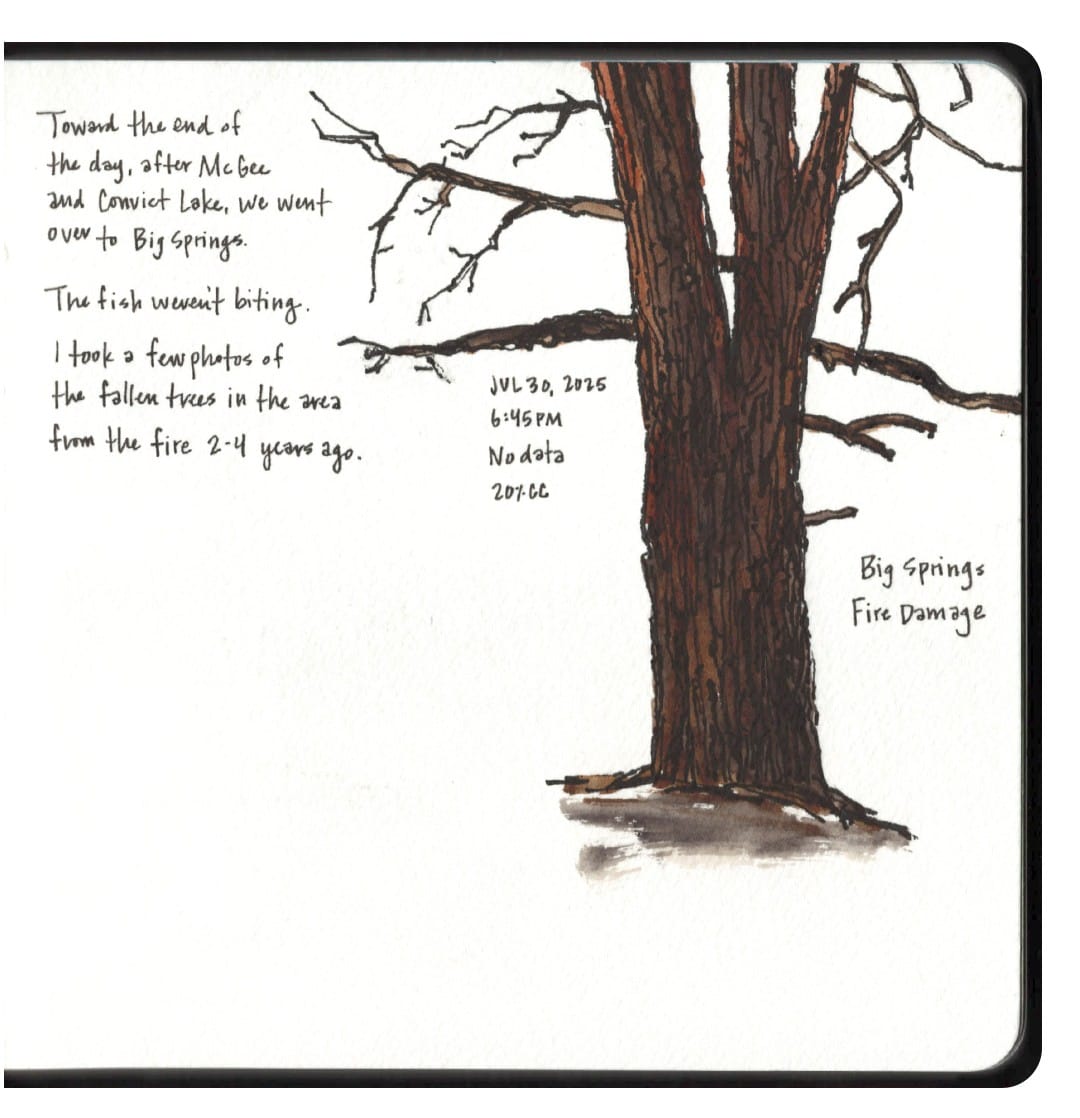
An invitation to revisit
Sometimes, an unfinished page can be an invitation. Not necessarily to finish it, but to reconnect with it. Returning to an old sketch, I might write a few lines about what that day meant to me now with some distance between me and the moment, but more often, I simply leave the sketch as it is. Sometimes it’s what goes unsaid or unwritten that speaks volumes.
The next time you encounter an unfinished page in your sketchbook or journal, pause and ask yourself, “What story does this page hold as it is?” Because sometimes, the most beautiful pages are the ones that never reach an ending.
